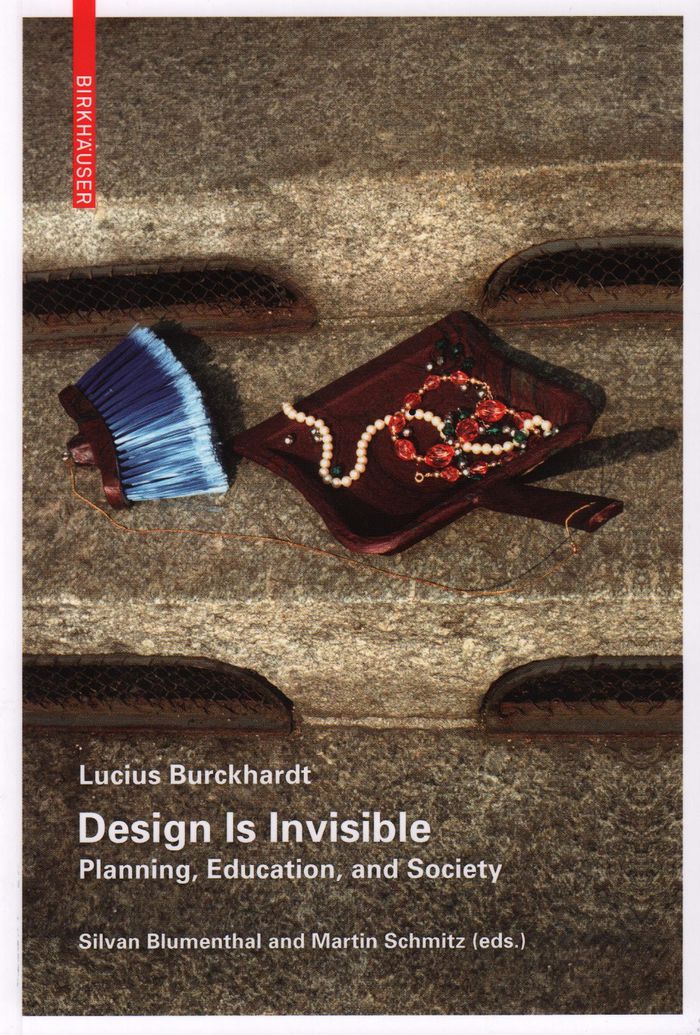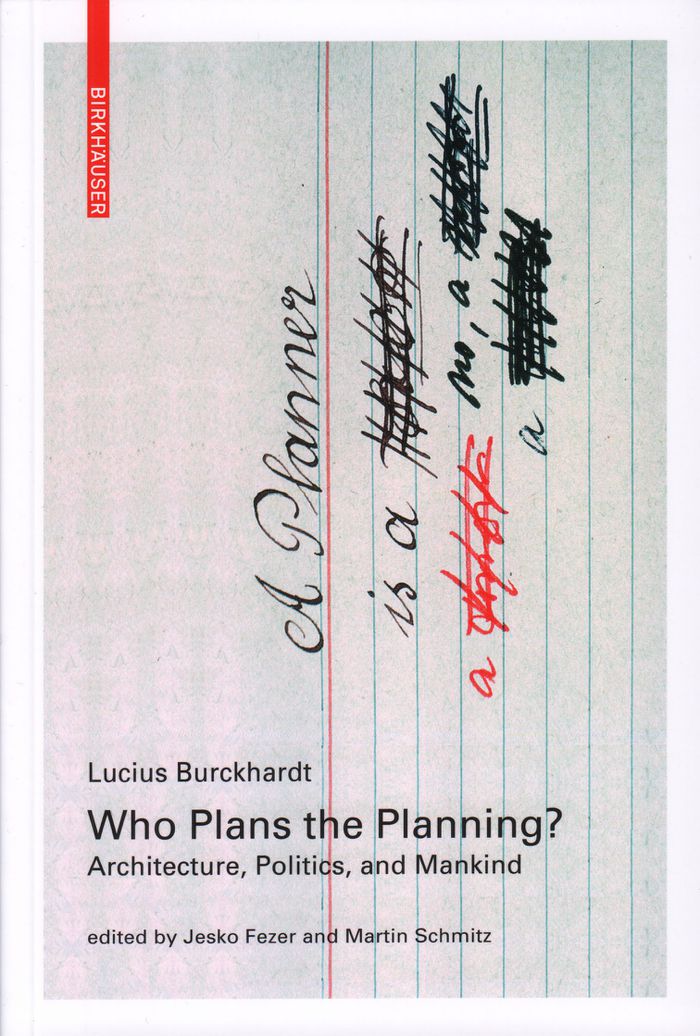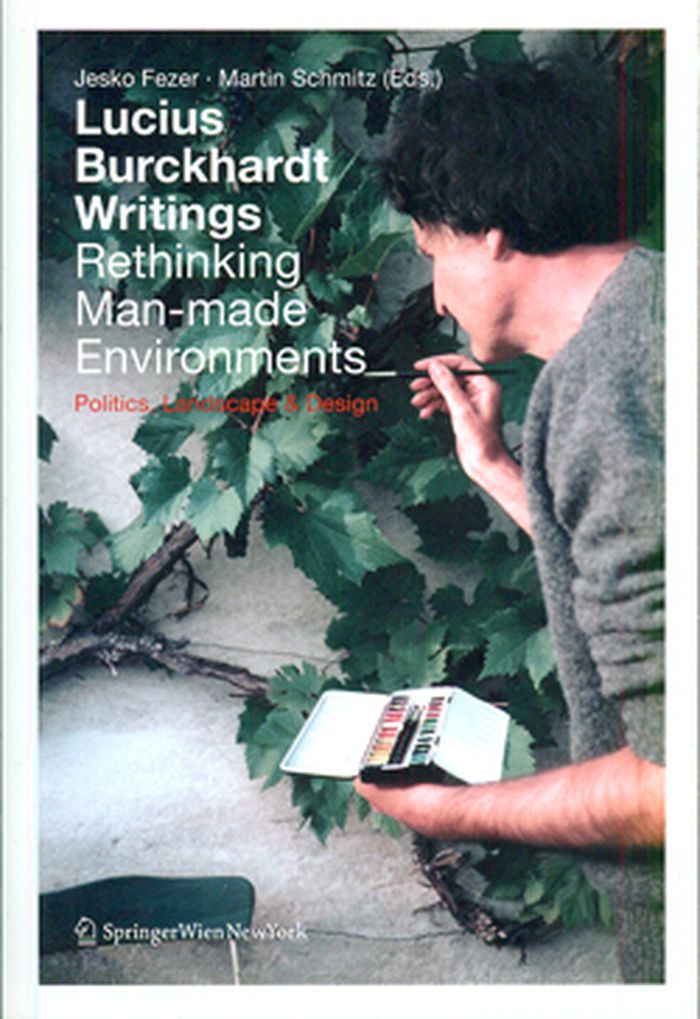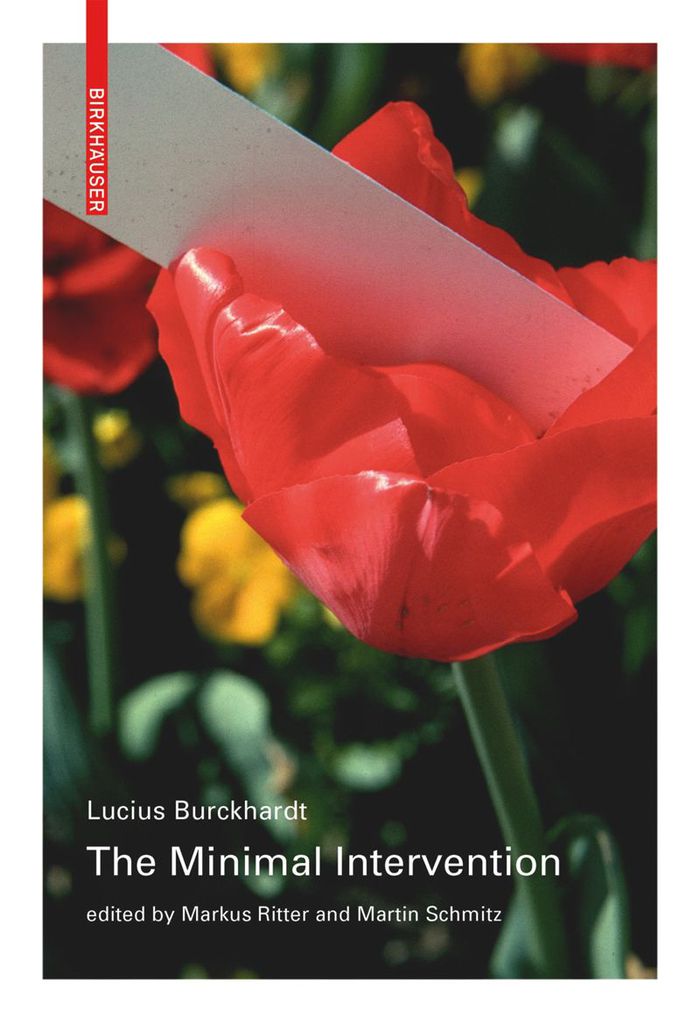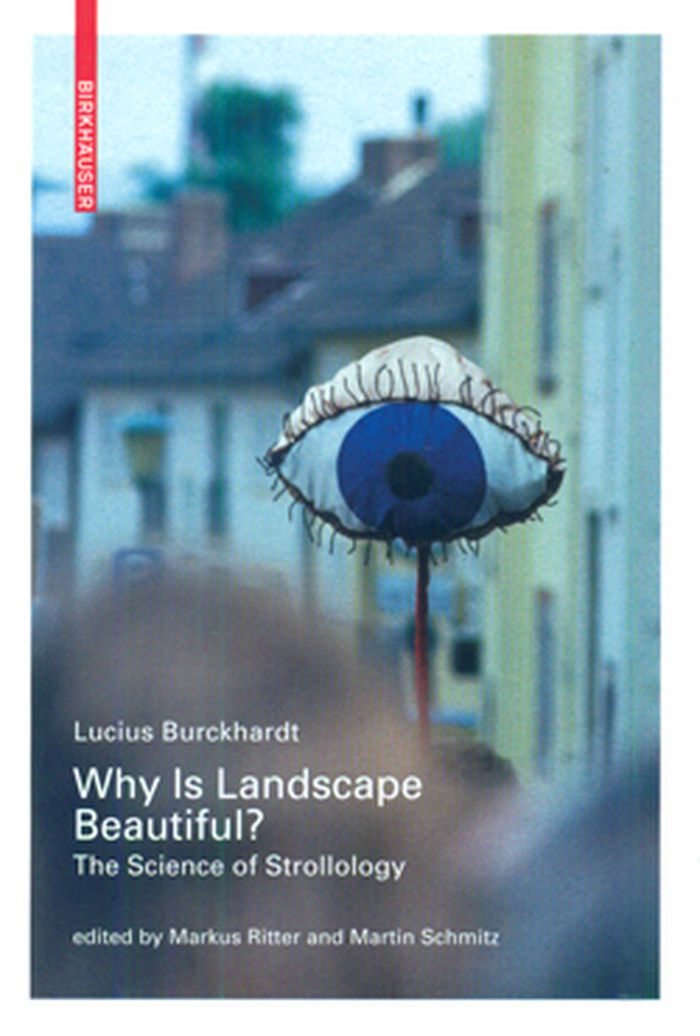$48.95
(disponible sur commande)
Résumé:
With Design is Invisible, Lucius Burckhardt was one of the first to point out that factors that are invisible can be integrated – they determine the use of objects and should be part of the design. What is the use of the most attractive tramway if it does not operate at night? Burckhardt expands on the meaning of design, in this case by including the timetable, which can(...)
Théorie de l’architecture
avril 2017
Design is invisible: planning, education and society
Actions:
Prix:
$48.95
(disponible sur commande)
Résumé:
With Design is Invisible, Lucius Burckhardt was one of the first to point out that factors that are invisible can be integrated – they determine the use of objects and should be part of the design. What is the use of the most attractive tramway if it does not operate at night? Burckhardt expands on the meaning of design, in this case by including the timetable, which can also be optimized. The relevance of these articles dating from between 1965 and 1999 can be appreciated today in the current debate on architecture. Problems arising from social polarization, rural depopulation, and migration can only be resolved on an interdisciplinary basis. The articles, for the first time available in English, finally allow access to key source texts for the purpose of international debate.
Théorie de l’architecture
$59.95
(disponible sur commande)
Résumé:
From the 1950s, Lucius Burckhardt (1925-?2003) focused on planning, design, and construction in a democracy. His astute observations and critical analysis have had a fundamental effect on the design of our environment, on teaching in the architectural/planning professions, and on our understanding of what "city" means. His research, which ? between mighty commercial(...)
Théorie de l’urbanisme
février 2020
Who plans the planning: architecture, politics, people
Actions:
Prix:
$59.95
(disponible sur commande)
Résumé:
From the 1950s, Lucius Burckhardt (1925-?2003) focused on planning, design, and construction in a democracy. His astute observations and critical analysis have had a fundamental effect on the design of our environment, on teaching in the architectural/planning professions, and on our understanding of what "city" means. His research, which ? between mighty commercial interests and conflicting political aspirations focuses on the benefit for the entire population ? is indispensable when and wherever buildings are planned, designed, built, and inhabited. With a new selection of texts, this book ploughs a furrow through Lucius Burckhardt'?s theory of planning.
Théorie de l’urbanisme
$34.95
(disponible sur commande)
Résumé:
Design for a democratic society was a matter of urgency in bombed-out postwar Europe. Swiss sociologist, journalist, professor and founding father of strollology, Lucius Burckhardt (1925-2003) pioneered the interdisciplinary analysis of man-made environments, and thereby highlighted both the visible and invisible aspects of our cities and social relations. Acutely aware(...)
Théorie de l’architecture
octobre 2012
Lucius Burckhardt writings: rethinking man-made environments
Actions:
Prix:
$34.95
(disponible sur commande)
Résumé:
Design for a democratic society was a matter of urgency in bombed-out postwar Europe. Swiss sociologist, journalist, professor and founding father of strollology, Lucius Burckhardt (1925-2003) pioneered the interdisciplinary analysis of man-made environments, and thereby highlighted both the visible and invisible aspects of our cities and social relations. Acutely aware of how our interventions and decisions shape the world, and how the changing world in turn, shapes us, his life-long focus was not only the prerequisites of architecture, urban planning and design but also their long-term impact. Teaching and practice still owe much to his work. Thus, the first selection of Lucius Burckhardt's texts to appear in English, introduces his groundbreaking theory of environmental design, in retrospective tribute to a prescient thinker.
Théorie de l’architecture
The minimal intervention
$37.95
(disponible en magasin)
Résumé:
Lucius Burckhardt (1925–2003) outlined his theory of the “smallest possible intervention” back in the early 1980s. The idea of minimal intervention runs through his entire oeuvre, from his critique of urbanism to the science of walking. The “smallest possible intervention” denotes a planning theory that assumes two “views” within landscape design: that which is actually(...)
Théorie du paysage
novembre 2022
The minimal intervention
Actions:
Prix:
$37.95
(disponible en magasin)
Résumé:
Lucius Burckhardt (1925–2003) outlined his theory of the “smallest possible intervention” back in the early 1980s. The idea of minimal intervention runs through his entire oeuvre, from his critique of urbanism to the science of walking. The “smallest possible intervention” denotes a planning theory that assumes two “views” within landscape design: that which is actually visible and that in our mind’s eye. The theory of the minimal intervention means not interfering excessively with the existing landscape, but instead working with the landscape in our minds to develop an aesthetic understanding of the environment. In this book, available for the first time in English, the Swiss sociologist applies this formula to many areas of design.
Théorie du paysage
$64.95
(disponible en magasin)
Résumé:
Lucius Burckhardt (1925-2003)founded the science of strollology -¨promenadology¨ - in the 1980s then further developped it as a complex and far-sighted planning and design discipline. Strollology is a sprinboard for a realistic approach to perception of the world around us, for an alternative reading of landscape and urban space, and for a new vision of architecture and(...)
Théorie du paysage
septembre 2015
Why is landscape beautiful? The science of strollology
Actions:
Prix:
$64.95
(disponible en magasin)
Résumé:
Lucius Burckhardt (1925-2003)founded the science of strollology -¨promenadology¨ - in the 1980s then further developped it as a complex and far-sighted planning and design discipline. Strollology is a sprinboard for a realistic approach to perception of the world around us, for an alternative reading of landscape and urban space, and for a new vision of architecture and urban planning.
Théorie du paysage
